Solutions for Antibiotic-Free Shrimp Farming
1. Ensuring Biosecurity
Implementing Biosecure Shrimp Farming Solutions
Disease-Free Shrimp Postlarvae (SPF) To achieve biosecure shrimp farming, the first critical factor is disease-free shrimp postlarvae (SPF). While SPF shrimp do not eliminate all potential pathogens, they significantly reduce the risk of major diseases such as White Spot Syndrome Virus (WSSV), Yellowhead Virus (YHV), Taura Syndrome Virus (TSV), and Infectious Hypodermal and Hematopoietic Necrosis Virus (IHHNV). These shrimp originate from certified biosecure facilities, undergo multiple disease screenings, and are sourced from broodstock that have been rigorously quarantined. Additionally, farmers can opt for Specific Pathogen Resistant (SPR) shrimp that offer targeted resistance to specific diseases. Testing shrimp postlarvae before stocking is essential to ensure they meet biosecurity standards.
Water Treatment The water supplied to shrimp ponds must undergo modern treatment processes such as mechanical, biological, and chemical filtration to ensure purity. Only treated water should be used, with closed-loop filtration systems applied wherever possible. All water storage and supply systems must be covered with nets to prevent the entry of vectors, crustaceans, larvae, and other undesirable organisms.
Equipment Disinfection Regular disinfection of tools and equipment is crucial to minimize pathogens on the farm. This practice reduces the risk of cross-contamination between ponds. Farmers should allocate dedicated tools (e.g., nets, feeding buckets, and sampling devices) to individual ponds to prevent disease transmission.
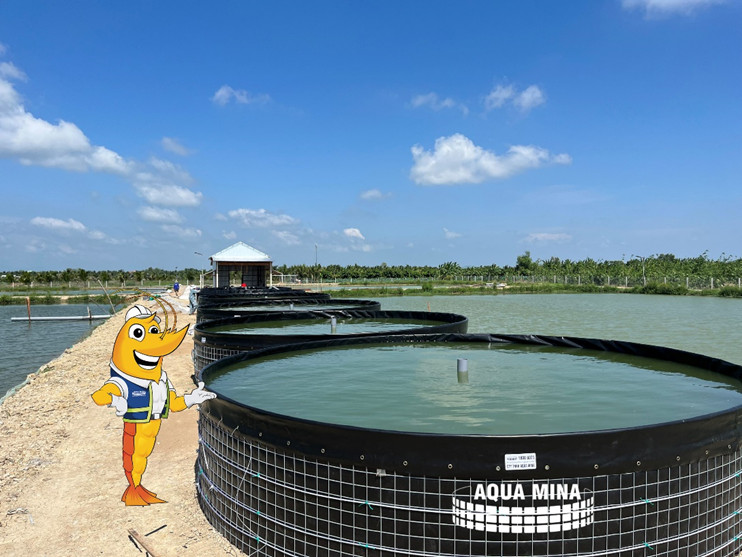
Regular Siphoning and Water Exchange To manage waste accumulation in high-density shrimp ponds, periodic siphoning or partial water replacement (10–20%) is necessary. This helps remove uneaten feed and shrimp waste, which otherwise could lead to harmful gases like ammonia (NH3), hydrogen sulfide (H2S), and nitrite (NO2) building up in the pond, adversely affecting shrimp health.
By adhering to these biosecure farming practices, farmers can ensure higher productivity, healthier shrimp, and reduced environmental impacts.
2. Integrating Probiotics
To limit disease outbreaks and reduce the use of antibiotics, alternative solutions have been actively sought to manage diseases and lower mortality rates, among which the use of probiotics has gained significant popularity. Probiotics have been researched and applied in livestock farming since the 1970s. By the late 1980s, the first publication on biological control in aquaculture was released, which spurred research efforts in this area (Verschuere et al., 2000).
The addition of beneficial microorganisms has been shown to improve biological factors related to water quality. However, issues can arise when these products are used indiscriminately to treat organic waste in aquaculture ponds. Overuse may rapidly decrease dissolved oxygen (DO) levels in the water and increase harmful NO2- and NH4+ concentrations.
Nevertheless, using advanced microbial technologies and proper application methods can create a beneficial and sustainable microbial system in aquaculture water. Accurate application of microbial technologies allows aquaculture farms to achieve desired results by reducing organic matter while maintaining low concentrations of harmful substances like NO2- and NH3. A water system with a sustainable microbial community will also eliminate opportunities for harmful bacteria to grow rapidly (Attramadal, et al., 2012).

3. Herbal Applications
Herbs are natural plants that bring numerous practical benefits to shrimp farmers. Using herbal remedies offers advantages such as preventing stunted growth in shrimp, maintaining healthy digestive systems, ensuring normal physiological and biochemical functions, and keeping shrimp healthy with vibrant coloration.
For instance, Allin, a compound in garlic, is an organic acid that combines with Allicinase (also present in garlic) when crushed to form Allicin. Allicin exhibits antibacterial and antifungal properties for shrimp. Garlic serves as a natural immune stimulant, offering a wide range of activities against Gram-negative and Gram-positive bacteria, viruses, and fungi. It also enhances phagocytosis and macrophage activity. Adding garlic essential oil to white-leg shrimp diets increases red blood cell counts, hemoglobin levels, white blood cells, and platelets. Garlic can inhibit or even combat pathogens, parasites, and viruses, supporting the shrimp’s immune system for proactive disease prevention.
Another example is the Phyllanthus niruri plant (commonly known as stonebreaker or seed-under-leaf), which contains compounds like Niranthin, Hypophyllanthin, and Phyllanthin. These have been proven to inhibit the DNA polymerase of certain viruses. Using Phyllanthus niruri extracts throughout the shrimp farming cycle can help prevent diseases like white spot syndrome and acute hepatopancreatic necrosis disease (AHPND). A commonly used dosage is 8 g of extract per kilogram of feed per day, which has been shown to be effective.
Additionally, other herbs like betel leaves, false daisy (Eclipta prostrata), rose myrtle (Rhodomyrtus tomentosa), and billygoat weed (Ageratum conyzoides) also provide benefits. Depending on the disease, shrimp health condition, environmental factors, weather, and pond conditions, farmers need to flexibly use herbal remedies. This approach ensures high effectiveness without harming shrimp, leaving no toxic residues in the environment, and reducing production costs.
Farmers should only use antibiotics to treat shrimp diseases when it is accurately determined that the disease is caused by bacteria. It is essential to conduct bacterial cultures and antibiotic susceptibility testing to provide a solid basis for identifying the disease and determining the bacteria’s sensitivity to antibiotics. This allows the selection of effective antibiotics that remain sensitive to the specific pathogens for treatment.
4. Adopting Antibiotic-Free Farming Models
Current shrimp farming technologies, such as Biofloc, the use of probiotics in shrimp farming, and recirculating aquaculture systems (RAS), are focused on models that minimize antibiotic use, promote organic shrimp farming, and ensure clean shrimp production. The significant benefits of these clean shrimp farming technologies include maintaining a sustainable farming environment, reducing antibiotic residue, and minimizing environmental pollution in shrimp farms.
Cre: contom.vn
Contact AQUA MINA for consultation and supply of aquaculture round tanks and aquaculture equipment for high-tech shrimp farming.
- Address: 685 National Highway 1A, Binh Hung Hoa Ward, Binh Tan District, Ho Chi Minh City
- Phone: 1800 6071 (Toll-free hotline)
- Email: sales@aquamina.com.vn or oversea@aquamina.com.vn
Aqua Mina's distributor in Japan:
REX INDUSTRIES CO., LTD
- Address: 1-9-3 Hishiya-Higashi, Higashi-Osaka 578-0948 JAPAN
- Email: kimakubo@rexind.co.jp
- Phone: +81-(0)72-961-9893
- Website: http://www.rexind.co.jp/e/

WE WORK FOR YOUR SUCCESS!
Ngày đăng : 28/11/2024
1977 View
Other Articles
A new breakthrough in the prevention of diseases caused by the microsporidian parasite EHP in shrimp farming
Vietnam’s shrimp export outlook in the first quarter of 2026 continues to face heavy pressure from tariffs.
New England’s shrimp fishery to shut down for the long haul after years of decline
Crab exports to the United States account for more than 80%.
Thailand sets a target to increase shrimp production to 400,000 tons by 2026.
CTU-RAS: Recirculating Shrimp Farming for Sustainable Development
Vietnamese aquatic products reach new markets
Global Shrimp Forum: Global shrimp trade is reshaping
China’s Import Value Up 10%, Vietnamese Shrimp Remains Among Leading Suppliers
After the 7.5-magnitude offshore earthquake in Aomori that injured 34 people, Japan has issued a warning about a potential mega-earthquake
India’s shrimp exports accelerate despite the trade war with the United States
Portuguese food group acquires 18% stake in cod farming company Norcod










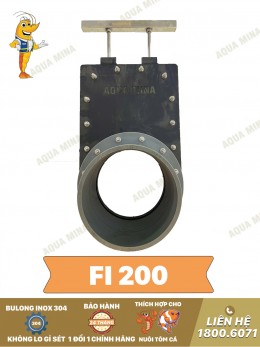



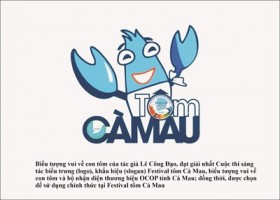
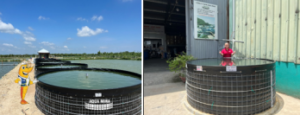


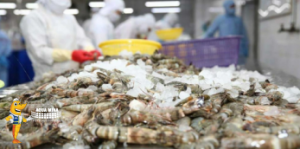
.jpg)